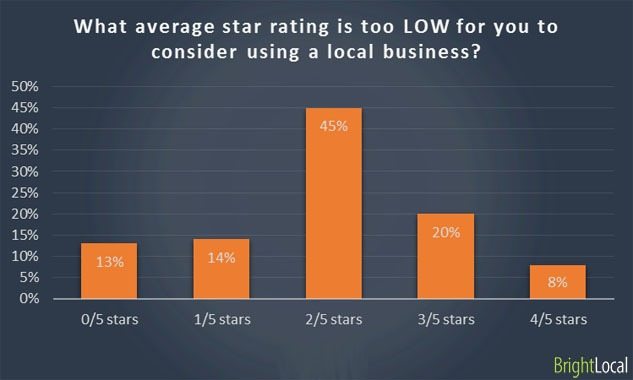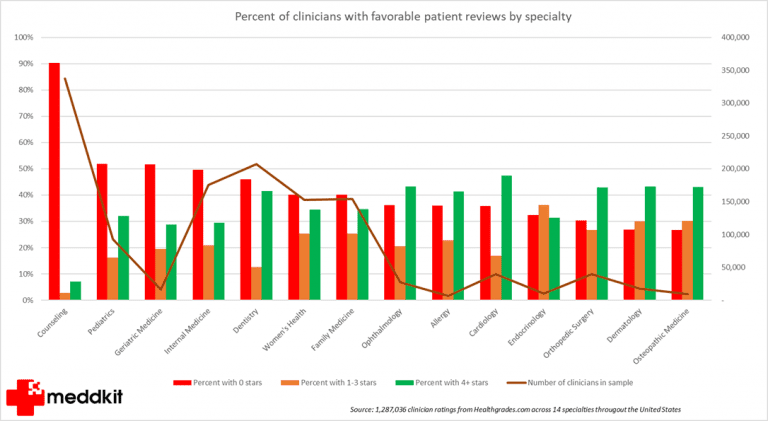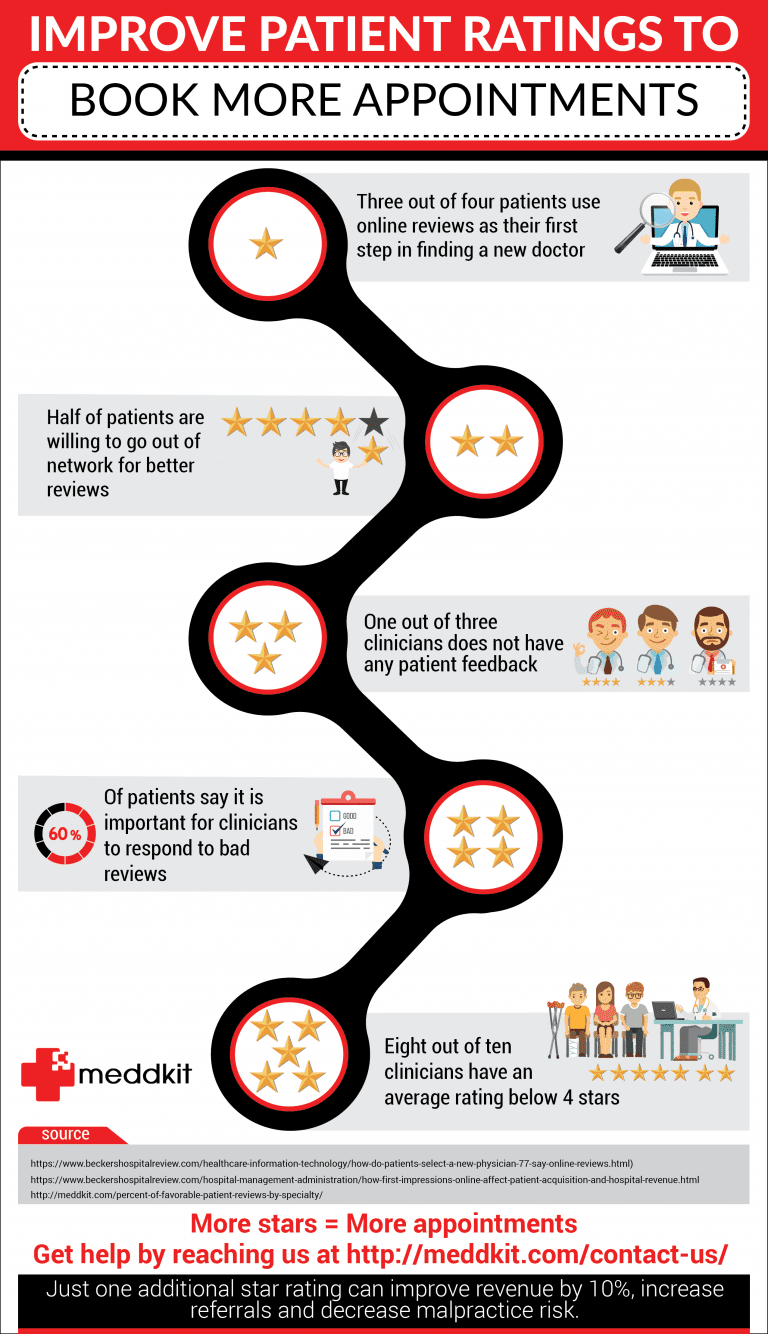Bad patient reviews ruin your practice. Get 20 scripts to fix.
The internet is truly magic. But all magic comes with a price. And its price in healthcare is the hordes of internet trolls leaving bad patient reviews that puts Tolkien’s fiction to shame. These trolls are meaner than anything Bilbo encountered.

It is impossible to avoid them. For example, even the very best restaurants in the United States routinely get scathing reviews. Check out just a couple below. Notice the misspellings and grammar!
“You can definitely skips this place. The issue is not the cost (yest it is pricey), but the dismal food. The food is tasteless, bland, and genuinely unappealing. A Swanson’s TV dinner from a microwabe would be a considerable step up. They should add McDonald’s to the menu (burgers, fries and shakes) so that guests will have something to eat.” -Peter S. on Per Se in New York
“I think Alinea and Next can stick there e tickets up there butt. They charge a mortgage payment for the privilege to eat in hyped up restaurants that are overrated. Suggestion to owner, get over yourself.” – Marty L. on Alinea in Chicago
They sound like trolls and they spell like trolls. Still, their negative feedback really does make an impact. In fact, a single star reduction can reduce a restaurant’s revenue by 5 to 9% according to Harvard Business Review.
Bad patient reviews hurt
Think that this doesn’t apply to health care? Think again. Healthgrades.com, a site dedicated to patient reviews of physicians, contains over 6 million entries. Charles Ornstein from ProPublica reported that Yelp features over 800,000 reviews of doctors, dentists, optometrics and chiropractors alone. And doctors on Yelp only have an average rating of 3.6 stars.
Our analysis found that only a third of healthcare providers have an average rating of four stars or more.
Doctors, dentists and counselors often get the worst of online reviews. Unlike with restaurants or salons, bad patient reviews are frequently personal. Consumers are complaining directly at the practitioner most of the time. Moreover, improperly responding to this feedback can lead to malpractice claims and HIPAA violations.
Here is what healthcare providers are dealing with:
“doctor’s finger was cold and they make you fill out paperwork”” wrote Ken M. about his doctor in Port Matilda on Yelp.
“Rudest office staff ever. Also incompetent. I will settle for rude & competent or polite & incompetent. But both rude & incompetent is unacceptable,” wrote one Yelp reviewer of a New York internist.
Everyone’s path is difficult. And it is true that “you never really understand a person …until you climb into [their] skin and walk around in it.” (Atticus Finch, To Kill A Mockingbird).
Health care providers know that often the most unreasonable patients are those that are in need of the most care. Plus, empathy, accountability and responsiveness are good for business — and your online presence.
How patients use online reviews
Online reviews are no longer just important, they are vital for business. Just as campaigns to bolster positive feedback are launched, efforts to mitigate bad reviews must run concurrently. BrightLocal showed that 72% of consumers would not consider using a local business with two or fewer stars.
Is this statistic really surprising? When was the last time you purchased a one star product on Amazon or knowingly visited a one star restaurant? If someone will not purchase a poorly rated product, how much less likely would they be to entrust their health and life to a poorly rated health care provider? Indeed, about half of patients are willing to go out-of-network for a doctor with better reviews.

(Source: https://www.brightlocal.com/learn/local-consumer-review-survey/)
Luckily, you can remove or reverse bad patient reviews. But filing lawsuits, logging complaints or trying to avoid the internet altogether are neither effective nor sustainable. The best best way to handle bad patient reviews is the most straightforward: respond to it quickly and empathetically.
Checking for bad patient reviews
Ideally, you will want to check for patient reviews and respond to the bad patient reviews every day. Consider using a patient reputation management service to alert you when a someone posts bad feedback. Meddkit can also take care of the follow up and resolution if you prefer not to do it yourself.
Set up a Google Alert
Set up a Google Alert for your name and your practice’s name so that you can receive alerts if any highly publicized feedback features you.
- Go to https://www.google.com/alerts
- Enter your name in quotation marks, followed by your credentials (e.g. “Mary Smith” MD)
- Select “Show options”
- For “How often” select “As-it-happens”
- Next to “Sources” select “Automatic”
- Under “How many” select “Only the best results”
- Remove anything not relevant to your health care practice under “Alert preview”
- Enter -“[website url]” to remove common listings from sites you don’t want included in your search (e.g. -“not-the-real-mary-smith.com”)
- Enter -[topic] to remove any irrelevant keywords that show up in the “Alert preview” (e.g. -“had a little lamb” -fleece -snow)
- Continue removing website URLs and topics until you only see health care listings for you or your practice.
- The final search might look something like “Mary Smith” MD -“NotTheRealMarySmith.com” -“had a little lamb” -fleece -snow
- Select “Create Alert”
Review profiles regularly
After setting up a Google Alert, doctors, dentists and care providers should check their personal Healthgrades, Facebook, Google, RateMDs, Vitals and WebMD profiles for bad patient reviews often in accordance with the number of patient appointments they see per day.
<10 patients per day. Check every two weeks.
10 to 30 patients per day. Check every week.
>30 patients per day. Check every day.
Multi-provider groups with over 200 patients per day should check each provider’s personal listing in addition to their group’s Yelp, Facebook and Google Business accounts daily as these sites pull non-provider specific feedback in addition to physician specific feedback. Groups with less patients can check these sites every week or two.
Replying to bad patient review comments
As soon as you spot them, respond to the bad patient reviews with a pre-written script in the same place online, if possible (i.e. Google, Facebook, Yelp). Bad review response scripts are advisable for you and your staff for two reasons.
- First, it can be easy to lash out to individuals who have left bad patient reviews, especially if part of the feedback is erroneous. A script takes you out of the moment and eliminates emotional overreaction.
- More importantly, doctors have to take care to maintain confidentiality confidentiality and not say anything that might violate HIPAA or put the practice at risk for a malpractice lawsuit. One hospital in California was fined $275,000 for disclosing patient information in response to a complaint. A simple grammatical slip up in moment could end up costing you hundreds of thousands of dollars. Pre-approved scripts protect you from these mishaps.
Simply copy and paste a different script for every bad review. Get our free whitepaper of 20 scripts for safely responding to bad patient reviews online.
Handling bad patient reviews over the phone
After responding to the feedback online, call the individual in order to to work out their concerns. Phone or face-to-face is preferable because you can more safely discuss confidential information about the visit. Moreover, it is well documented that verbal communication is better than nonverbal communication in most conflict scenarios.
Use the H.E.A.R.T. method to guide your phone conversation
Hear.
After calling the individual who left the negative feedback, ask for and listen to their concerns. You will want to kick the conversation off with an unassuming statement like, “Would you mind helping me understand what happened?”
Empathize.
Show the person that you care about them and their concerns. Simply say, “If I were in your position, I would feel just as you do.” (Source: How to Win Friends and Influence People by Dale Carnegie)
Apologize.
Quickly and sincerely apologize to the patient without admitting fault, if appropriate. Just be careful, due to the risk of malpractice it’s important to always be empathetic but not admit fault. For example, “I am sorry that you feel this way. We are committed to making your experience better.”
Resolve.
Show the individual your commitment to making the situation better. You may not be able to fix the issue, but before you talk to the individual you should have some idea about what you can do to improve their situation. Say, “Would it help if I [RESOLUTION]?”.
Take Action.
After agreeing on a next step for the resolution, take immediate action to toward that resolution. Often, the next step is to respond to the individual and any involved parties in a written format with the agreed upon next steps.
Don’t allow bad patient reviews to go unanswered
Allowing bad patient reviews to go unanswered can seem to some prospective patients as the feedback is true or that you are combative towards criticism. Responding to them on the online review site shows your prospective patients that you care about making them happy.
Your reviews do not need to be perfect
Few, if any, people expect all of your reviews to be perfect. Instead, they are looking to get a quick “thumbs up” or “thumbs down” assessment on whether or not they can entrust themselves to your care.
Save time with 20 healthcare approved scripts
Many healthcare providers don’t have time to create a dozen scripts to respond to patient reviews online. No worries, we’ve built it for you. Download your 20 scripts for safely responding to bad patient reviews online now.
If you need help monitoring all patient reviews regularly or responding to them in real-time, contact us.








